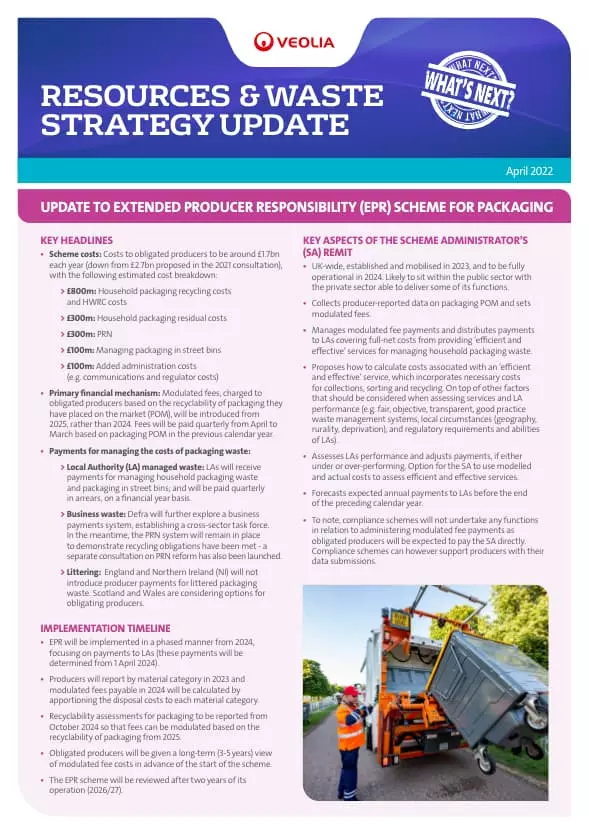Following the launch of the Plastic Packaging Tax on 1st April, the government has provided an update on the Resources & Waste Strategy, largely focusing on Extended Producer Responsibility (EPR). This update includes information on the cost of the scheme to obligated producers, a timeline for implementation and further guidance on what future aspects of the strategy will entail.
Read on to find out more.
What are the key headlines from the update?
This update provides more information on EPR's future financial impact. Whereas in 2021 it was proposed that the total cost to obligated producers would be £2.7 billion, this update forecasts the cost to be around £1.7 billion each year. This amount is then broken down further, showing that the largest cost - £800 million - will come from household packaging recycling and HWRC (Household Waste Recycling Centre) costs. We also learn in this update that modulated fees, charged to obligated producers based on the recyclability of packaging they have placed on the market, will take effect from 2025, not 2024 as originally planned. In addition, the update contains information on payments for managing the cost of packaging waste.
What will be the timeline for implementation?
The implementation of EPR will begin in 2024, focusing on payments to Local Authorities. Producers will then need to report by material category in 2023, with recyclability assessments for packaging to be reported from October 2024, so that fees can be based on the recyclability of packaging from 2025. In advance of the start of the scheme, obligated producers will be given a long-term view (3-5 years) of modulated fee costs. The EPR scheme will then be reviewed after two years of implementation, in 2026/27.
What's happening with the Deposit Return Scheme (DRS)?
There was also some detail provided on the DRS in this update. England, Wales and Northern Ireland will implement an all-in DRS, in line with Scotland's approach. This covers all single-use drinks containers containing between 50ml and 3L of liquid, and will include containers sold both individually and as part of a multipack. Wales is also following Scotland by including glass as part of its DRS, whereas England and Northern Ireland will not be including glass. All nations will be including PET bottles and steel/aluminium drinks cans. The update also states that digital DRS technology solutions will continue to be explored, potentially enabling bottle deposit returns via the existing kerbside collections infrastructure.
What are the next steps for the Resources & Waste Strategy?
The DRS (in England, Wales and Northern Ireland) and Consistency of Collections (England only) reform consultations are due to be published in Q2 this year. The Government will be developing the EPR Statutory Instrument (SI) in 2022, which will cover the majority of EPR's key design aspects, alongside a separate Data Reporting SI, both to take effect in 2023. In the meantime, Veolia will continue to engage with the Government as these new initiatives take shape, and we are here to offer guidance and support if your business has any questions.



